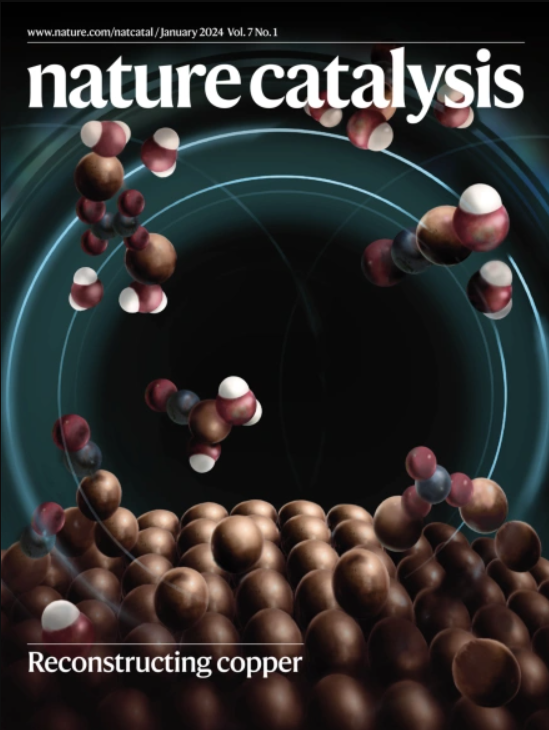通过定向6π活化,钌催化非活化芳烃的选择性饱和
IF 44.6
1区 化学
Q1 CHEMISTRY, PHYSICAL
引用次数: 0
摘要
定向基团策略已被证明对烯烃和羰基中的π键以及C-H和C-C键的位点选择性功能化非常有效,但尚未证明对未活化的芳香π键系统。同时,芳烃催化加氢生成相应的饱和碳环或杂环,为提高药物化合物的分子三维度和sp3碳含量提供了一种直接的方法;然而,在电子和立体无偏芳烃之间实现位点选择性脱芳化仍然具有挑战性。在这里,我们报道了一个钌催化的定向芳烃饱和,它选择性地减少了与定向部分相邻的芳基。值得注意的是,许多易还原的官能团与温和的反应条件相容。初步的机理研究揭示了一个均相的催化过程,以及一个η - 6-芳烃-钌中间体的潜在参与。该方法在顺式阿托伐醌的流线型合成、克级反应和复杂生物活性化合物的后期饱和中得到了证明。本文章由计算机程序翻译,如有差异,请以英文原文为准。


Site-selective Ru-catalysed saturation of unactivated arenes via directed 6π activation
Directing group-based strategies have proven highly effective for site-selective functionalization of π bonds in alkenes and carbonyls, as well as C–H and C–C bonds, but have yet to be demonstrated for unactivated aromatic π-systems. Meanwhile, catalytic hydrogenation of arenes to their corresponding saturated carbo- or heterocycles offers a straightforward approach to increase molecular three-dimensionality and sp3 carbon content in pharmaceutical compounds; however, it remains challenging to achieve site-selective dearomatization among electronically and sterically unbiased arenes. Here we report a Ru-catalysed directed arene saturation, which selectively reduces the aryl group adjacent to the directing moiety. Remarkably, a number of easily reducible functional groups are compatible with the mild reaction conditions. The preliminary mechanistic study reveals a homogeneous catalysis process and the potential involvement of an η6-arene-ruthenium intermediate. The synthetic utility of this method is demonstrated in the streamlined synthesis of cis-atovaquone, gram-scale reactions and late-stage saturation of complex bioactive compounds. Directing group strategies for selective dearomatization of unactivated aromatic π-systems have remained elusive. Now a homogeneous ruthenium catalyst, aided by a removable directing group, enables the site-selective hydrogenation of less reactive arene moieties in polyaryl compounds.
求助全文
通过发布文献求助,成功后即可免费获取论文全文。
去求助
来源期刊

Nature Catalysis
Chemical Engineering-Bioengineering
CiteScore
52.10
自引率
1.10%
发文量
140
期刊介绍:
Nature Catalysis serves as a platform for researchers across chemistry and related fields, focusing on homogeneous catalysis, heterogeneous catalysis, and biocatalysts, encompassing both fundamental and applied studies. With a particular emphasis on advancing sustainable industries and processes, the journal provides comprehensive coverage of catalysis research, appealing to scientists, engineers, and researchers in academia and industry.
Maintaining the high standards of the Nature brand, Nature Catalysis boasts a dedicated team of professional editors, rigorous peer-review processes, and swift publication times, ensuring editorial independence and quality. The journal publishes work spanning heterogeneous catalysis, homogeneous catalysis, and biocatalysis, covering areas such as catalytic synthesis, mechanisms, characterization, computational studies, nanoparticle catalysis, electrocatalysis, photocatalysis, environmental catalysis, asymmetric catalysis, and various forms of organocatalysis.
 求助内容:
求助内容: 应助结果提醒方式:
应助结果提醒方式:


